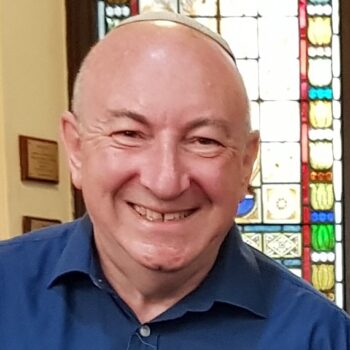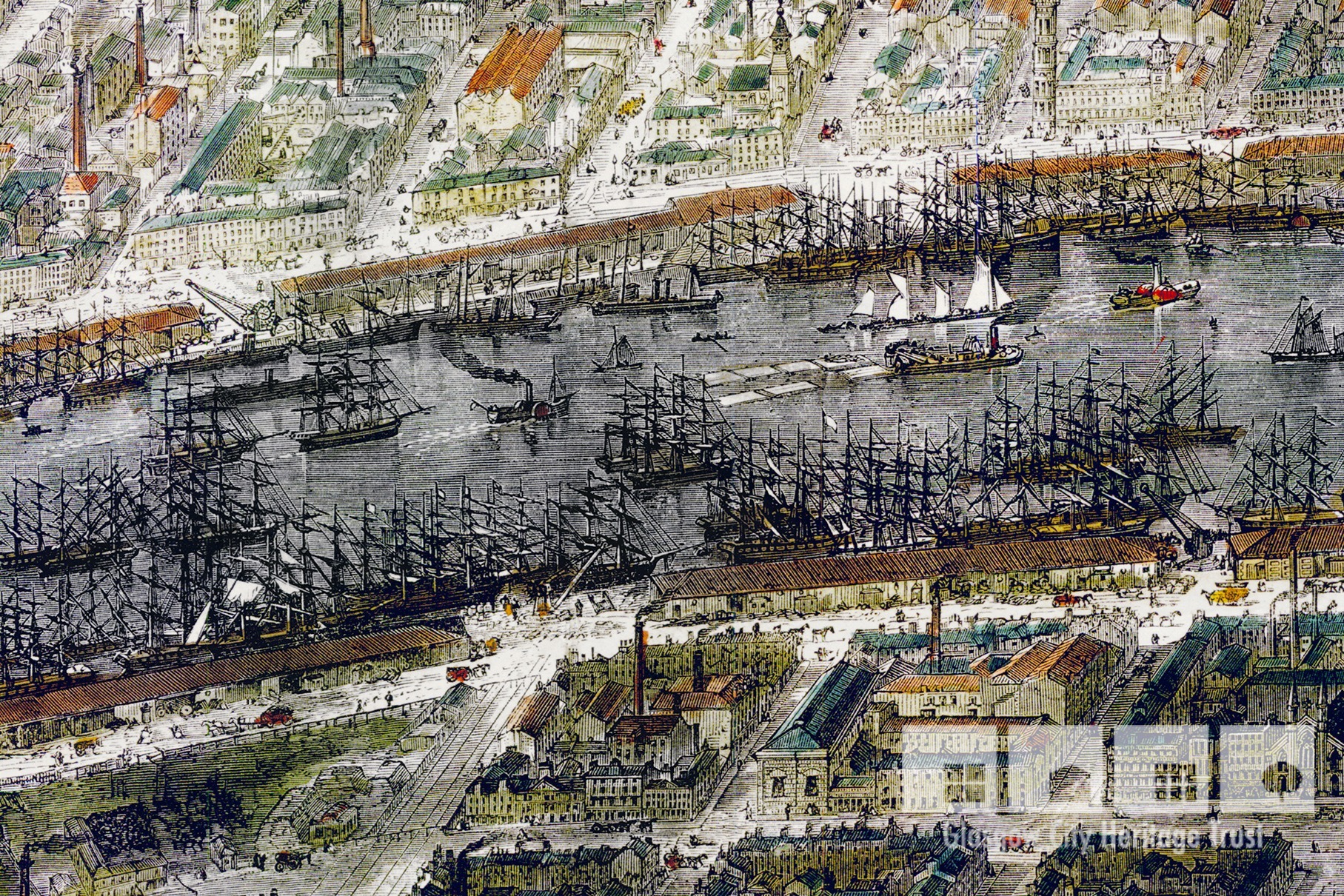By Harvey Kaplan
GARNETHILL SYNAGOGUE
Nestling in the back streets of Garnethill in Glasgow is a hidden architectural gem. Garnethill Synagogue in Hill Street is Scotland’s oldest, opening its doors in 1879. The first purpose-built synagogue in Scotland, it is listed as Category A and is judged to be one of the top ten historic synagogues in the British Isles – and the only one north of Liverpool. The interior is an extravagant mix of carved wood, plaster cornicing, marble, cast iron, tiled floors and colourful stained glass windows.
The founders of the synagogue included successful businessmen, who contributed to Glasgow’s dramatic 19th century expansion. For example, Michael Simons was a fruit broker who went on to become a Bailie of Glasgow Corporation. He was a great patron of the arts, involved in the Glasgow Exhibitions of 1890 and 1901, and founder of the company which opened the Theatre Royal and the King’s Theatre.
THE CONGREGATION
Others in this group were the brothers Samuel and Isidor Morris from Danzig, who were agents for esparto grass, used in paper production. David Heilbron, from Breda in the Netherlands, came to Glasgow around 1870 and was a leading member of the congregation, also involved in the Hebrew Philanthropic Society. The Post Office Directory shows that in 1879 he was a ‘wine merchant and importer of cigars, manufacturer of cordials and Dutch and orange bitters’ in Elmbank Lane. Julius Frankenburgh, from Poland, manufacturer of fancy leather bags and leggings, succeeded Samuel Morris as president of the congregation, while his wife Phoebe was at one time President of the Hebrew Ladies’ Benevolent Fund.
One of the most enterprising ladies of the congregation was Rachel Levine, one of thirteen children of Reverend Isaac Levine, Reader of the congregation from 1875 to 1921, and his wife Deba. Rachel was one of the first Jewish girls to study at Glasgow University, attending classes at Queen Margaret College between 1896-1902. She then went to work at Norwood- the Jewish orphanage and school in London- where she became proficient in the teaching of the deaf and dumb.
Returning to Glasgow, in 1908, she was examined and recognised by the Scotch Education Department as a certified teacher of the deaf. She taught at a number of special needs schools in Glasgow until she retired in 1940. In 1944 she was brought back into teaching for the remainder of the Second World War.
Rachel was actively involved in Jewish benevolent work. A lifelong member of Garnethill Synagogue, she served on the Synagogue School Committee and assisted with the Women’s Guild and Women’s Friendship Club.
IMMIGRATION
Still housing a small but active congregation, Garnethill synagogue has been the home since 1987 of the Scottish Jewish Archives Centre (SJAC), whose mission is to collect and preserve the records of the Jewish experience in Scotland over the past two centuries. The Centre is a treasure-house of documents, photographs, oral history interviews, immigrant and refugee artefacts, historic ceremonial objects, textiles, sculptures and paintings. One of the main themes discussed in the building is immigration. The Jewish community in Scotland today is descended from immigrants. The first Jews came to Scotland in the late 1600s and in the 1700s, as university teachers, medical students, or as merchants and craftsmen – all in very small numbers. The first organised community was established in Edinburgh about 1817, when a synagogue was established and soon after, a small cemetery was opened. The first synagogue in Glasgow opened in a flat in the High Street about 1821. The first Jewish cemetery in Glasgow opened in 1832 as a Jewish enclosure in the newly opened Necropolis. In the first half of the 19th century, Jewish arrivals in Glasgow were mainly from England, the Netherlands or the German lands.
A BETTER LIFE
In the late 19th and early 20th centuries, the Jewish community in Scotland saw a major influx of Jews from eastern Europe – mostly from the Russian and Austrian Empires. As international travel opened up with the railways and steamships, they were fleeing poverty, discrimination, persecution, pogroms and military conscription. They wanted to make a better life for themselves and their families and many were aiming for the ‘goldene medina’ – the ‘golden land’ of America. One of the most popular routes was arrival on the east coast of Britain, such as Hull, Grimsby or Leith and then catching a ship from Liverpool or Glasgow. In this way, many thousands passed through Glasgow. A number of the migrants stayed in Scotland, with some moving on at a later date to the USA, Canada, South Africa and elsewhere.
Many Jewish immigrants settled in the Gorbals, where a vibrant Jewish community grew up, with synagogues, religion classes, charities and friendly societies, social centres, cultural and political organisations. There were a number of kosher grocers and butchers, where the immigrants could enjoy a taste of ‘the old country.’ There was even a kosher hotel, run by Mrs Sophie Geneen, who was also active in communal charities, providing dowries for poor brides, entertaining Jewish soldiers in wartime and giving employment to refugees.
THE HOLOCAUST
A third wave of Jewish immigrants arrived in Britain in the 1930s and 1940s – before, during and after the Second World War. Many came as unaccompanied children on the Kindertransport. Hundreds of Jewish doctors came here to requalify. Others came on domestic service visas, businessmen who rebuilt their businesses in Scotland, artists, scientists and educationalists, or exiled Polish soldiers. After the war, a number of concentration camp survivors arrived to make a new home in Scotland.
Included in the new Scottish Jewish Heritage Centre project is the creation of the Scottish Holocaust-era Study Centre, which provides greater access to the fast-growing refugee collections of SJAC, for the benefit of school pupils, students, researchers and other visitors. The Centre looks at the experience of Jewish refugees who came to Scotland before, during and after the Second World War and also the contribution they made to Scottish society. Austrians Rudolf Bing and Hans Gal founded the Edinburgh Festival, Hans Walter Kosterlitz from Berlin discovered endorphins. Other top scientists included Charlotte Auerbach and Regina Kapeller-Adler. Kate Hermann became Scotland’s first female consultant neurologist. Child refugee Rosa Sacharin (Goldszal) became a nurse tutor and wrote textbooks. Vienna art school graduate Hilda Goldwag worked as a textile designer in Glasgow. She designed scarves for the fledgling BOAC.
All images copyright Scottish Jewish Archives Centre. Please do not reproduce without permission.
Harvey Kaplan, Glasgow University History graduate, is the Director and co-founder of the Scottish Jewish Archives Centre (SJAC) and a Trustee of the new Scottish Jewish Heritage Centre. He has co-curated displays, mentored researchers and presented nationally and internationally at meetings and conferences on Scottish Jewish history and family history. He has also written widely for books, journals and magazines and researched for television programmes such as Who Do You Think You Are?

WANT TO KNOW MORE?
- July 2021 saw the launch of the new Scottish Jewish Heritage Centre in Garnethill Synagogue, created in a partnership between SJAC and Garnethill Synagogue Preservation Trust (GSPT). The aim is to expand access to this splendid Victorian building and to showcase the displays and resources of SJAC. The Heritage Centre is the result of capital investment by a range of funders (the National Lottery Heritage Fund, the Association of Jewish Refugees, the German Federal Government, the Wolfson Family Foundation, Architectural Heritage Fund, William Grant Foundation and CST). This has resulted in building repair, renovation and decoration, new equipment, furniture and fittings and in creating new resources and displays.
- Find out more about the work of the Archives Centre and of the Heritage Centre. There are regular guided tours and a school visit service. They look forward to welcoming you!
- Explore our Gallus Glasgow map
- Prints of the map are available to buy in our online shop








